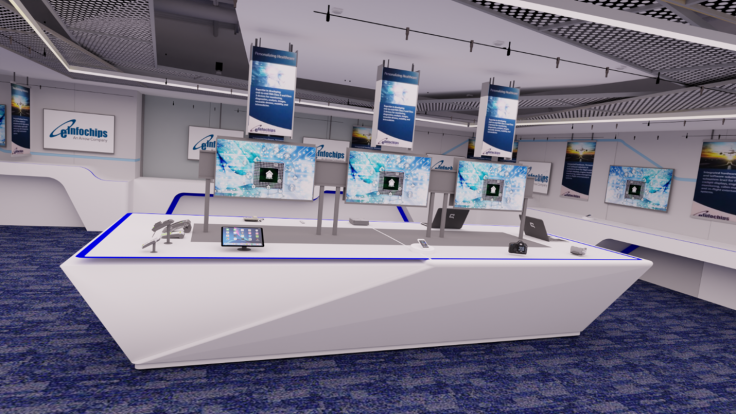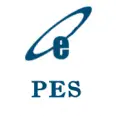As technology continues to evolve at an unprecedented rate, 3D scenes and robotics are emerging as some of the most exciting and promising areas of innovation. The ability to create and manipulate 3D objects in real-time is revolutionizing industries such as architecture, entertainment, and manufacturing, while robotics is transforming the way we approach tasks and solve complex problems in fields ranging from healthcare to space exploration.

Figure 1. A typical flowchart for training visual perception models with synthetic data.
A typical deep learning model development pipeline includes data acquisition, data preparation, model training, performance benchmarking of the model, optimization of the model, and then finally deploying the model on the target device. Since a deep learning model learns the representation directly from the data, we can say that the more data, the better the performance.
In this blog, we will focus on the “Data Generation” section shown above in Figure 1. We will investigate how we can test robotics applications by leveraging the power of physically accurate simulations in Nvidia Isaac Sim. We will also explore the benefits and challenges of using Blender and Nvidia Isaac Sim together and examine some of the current approaches to integrating these two powerful tools.
Nvidia Isaac Sim and Blender are two powerful tools widely used in computer graphics and robotics. Nvidia Isaac Sim is a simulation software that provides a realistic environment for training and testing autonomous robots, while Blender is an open-source 3D modeling and animation software. In recent years, there has been a growing interest in the interoperability of these two tools, with developers seeking to integrate the power of Blender’s 3D modeling and animation capabilities with the realism and accuracy of Nvidia Isaac Sim’s simulations.
Maximizing Efficiency and Creativity: Benefits of Combining Nvidia Isaac Sim and Blender
The benefits of interoperability between Nvidia Isaac Sim and Blender are numerous. By integrating the two tools, developers can take advantage of the strengths of both platforms, creating more realistic and accurate simulations while also benefiting from the powerful 3D modeling and animation capabilities of Blender.
One of the key benefits of using Blender with Nvidia Isaac Sim is the ability to create highly detailed and realistic models for use in simulations. Blender’s 3D modeling capabilities enable developers to create complex, detailed models of robots and their environments, including textures, materials, and lighting, while Nvidia Isaac Sim’s advanced physics engines and 3D graphics enable these models to be used in highly realistic simulations. This means that developers can create simulations that accurately reflect the real-world conditions in which their robots will operate, providing them with a powerful toolset for testing and refining their algorithms. These models can then be imported into Nvidia Isaac Sim, where they can be used to create highly realistic simulations, complete with accurate physics and dynamic lighting.

Figure 2. Viewport from Blender while creating the 3D scene.

Figure 3. Viewport from Isaac Sim after importing the FBX file from Blender to Isaac Sim.
Another benefit of using Blender with Nvidia Isaac Sim is the ability to create custom animations for use in simulations. With Blender’s powerful animation tools, developers can create realistic animations of robots and their environments, including motion, gestures, and facial expressions. These animations can then be imported into Nvidia Isaac Sim, where they can be used to create more realistic and engaging simulations.

Figure 4. Sample synthetic data in PNG format for training an object detection model for cardboard-box detection.
With such a small domain gap (simulation to the real-world gap – Figure 4), we can leverage the power of synthetic data generation from Nvidia Isaac Sim to train deep perception models. This can help reduce the time and effort required to gather the dataset and then manually annotate it. We can fine-tune any model with a small set of real-world images based on how photo-realistic our synthetic data is that we generated with Nvidia Isaac Sim.
Challenges
While there are many benefits to interoperability between Nvidia Isaac Sim and Blender, there are some challenges that developers must overcome. One of the key challenges is ensuring that the models and animations created in Blender are compatible with Nvidia Isaac Sim. This requires careful attention to detail and an understanding of the technical requirements of both tools. Another challenge of interoperability is the need for a seamless workflow between the two tools. Developers must be able to easily import and export models and animations between Blender and Nvidia Isaac Sim, and they must be able to work with the two tools in a way that is intuitive and efficient.
Approaches
There are several approaches to integrating Blender and Nvidia Isaac Sim, each with its own advantages and challenges. One approach is to use a third-party plugin, such as the NVIDIA FleX Blender Addon, which enables developers to export Blender models and animations to Nvidia Isaac Sim. This plugin supports a wide range of features, including soft body and fluid simulations, and it is compatible with both Blender and Nvidia Isaac Sim.
Another approach is to use Unreal Engine, which provides a powerful and flexible platform for creating simulations and animations. With Unreal Engine, developers can create highly detailed and realistic models and animations in Blender, which can then be imported into Unreal Engine for use in simulations. The Unreal Engine provides a range of features and tools for creating dynamic, interactive simulations, and it is compatible with both Blender and Nvidia Isaac Sim.
A third approach is to use Python scripts to automate the process of exporting models and animations between Blender and Nvidia Isaac Sim. This approach requires a deep understanding of both tools and the ability to write custom scripts to automate the workflow. However, it can be a powerful and flexible approach that enables developers to create highly customized simulations and animations.
Conclusion
In conclusion, interoperability between Nvidia Isaac Sim and Blender can revolutionize robotics and computer graphics. By combining the power of Blender’s 3D modeling and animation capabilities with the realism and accuracy of Nvidia Isaac Sim’s simulations, developers can create highly detailed and realistic simulations of robots and their environments for use in testing and refining their algorithms.
Authors

Mayank Ukani
Engineer (eInfochips – An Arrow Company)
Mayank Ukani is an Engineer at eInfochips with over 3 years of expertise in various fields of computer science such as image processing, deep learning, simulation, synthetic data generation, artificial intelligence, and embedded systems. He has a deep understanding of computer vision techniques, such as object detection, segmentation, and tracking, and is currently working on 6DoF (Degrees of Freedom) object regression via supervised learning.

Purnima Batham
Solution Engineer (eInfochips – An Arrow Company)
Purnima Batham is working as a solution engineer at eInfochips Ahmedabad. She is experienced in creating 3D scenes and textures in open-source 3D creation suite Blender. She enjoys exploring new areas in designing. Purnima did her B.tech in Electronics and communication in 2021 from Shri Vaishnav Vidyapeeth Vishwavidyalaya Indore. She loves doing arts and crafts in her spare time.













